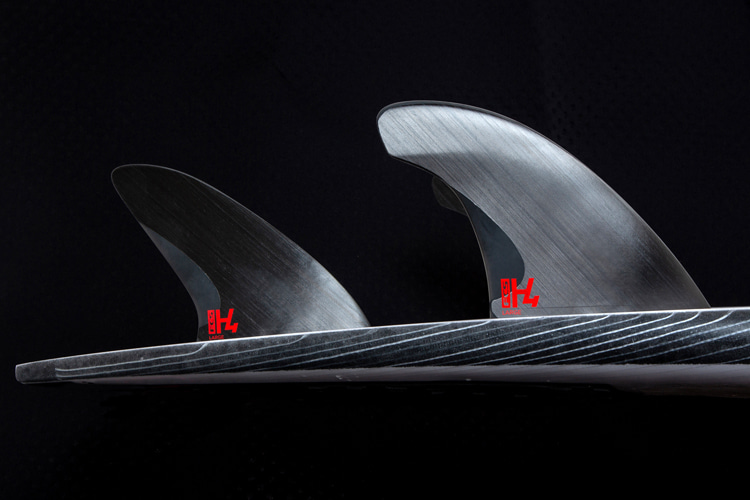Surfboard fin manufacturer FCS has announced the launch of the H Series.
The concept behind the H Series is the exploration of the correlation between hydrodynamics and fin design.
"The project has always been about pushing boundaries and adapting functional design theory to hardware with a goal to enhance the surfing experience through a better performing fin," FCS explains.
It all started with the H2 Elliptic fin, which married a nautical-inspired template, a unique side fin foil, and extreme cant angles.
"Our quest was to achieve highly efficient water flow when carving a turn," adds the Australian brand.
"We applied our learnings to the H3 Nexus and took it one step further by combining an elliptical template with a three-dimensional flex pattern that could harness and release energy in the form of projection and speed."
H4 aims to break the established idea that a premium fin must be made from layers of fiberglass.
So, FCS teamed up with a Swiss company to use precision injection molding and fused unidirectional carbon to produce a fin that optimizes all variables - materials, geometry, and flexibility.
The surfboard fin company says that the "when you initiate a turn, H4 will supply speed when you need it, and then release it at the ideal transition point."
All in all, the H4 Series promises to create maximum power output for effort, minimal drag for optimum speed, and deliver a feeling of predictability and effortless control at every riding moment.
The Design
FCS states that the two radically different side and center fin templates create a set with ultimate speed and drive that doesn't compromise control or maneuverability.
The side fin's upper section serves to produce instantaneous acceleration from take-off to bottom turn via an efficient rebound effect.
Furthermore, the hatchet-like shape of the tip creates stability and a feeling of control and certainty under extreme loads.
The wide, thick base is tuned for rigidity and maximum driving power.
The center fin's tapering elliptical outline offers progressive stalling behavior at the most critical moments, meaning the fin will release precisely when you need it.
The base is skewed forwards, offsetting the high rake angle in the tip to minimize drag, maximize speed and maintain the smooth turning nature of a more traditional shaped template.
Finally, the foil profile.
With a focus on speed, newly developed foils on the side and center fins significantly lower drag and introduce flex in the upper half of the fin precisely where it's needed.
These foils also create a very high stall limit providing a feeling of predictability through the most acute turns and in critical wave moments.
Learn more about the different surfboard fin setups.
